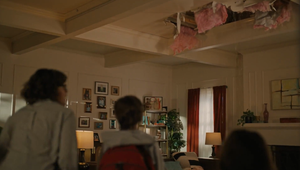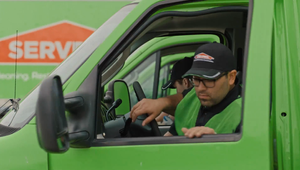
How Miller Lite Captured the Soundtrack of Six Iconic US Territories

In an increasingly digital era of connection and communication, the value of authenticity has perhaps never been higher. And for DDB Chicago’s national campaign for Miller Lite last year, it was an especially pressing concern.
For the Taste You Can Depend On campaign, the agency set out looking to capture authentic moments which highlighted the versatility of the brand. Be it kicking back on a beach, getting together to watch a game, or enjoying the late-night vibes of a city, the goal was to showcase how Miller Lite could be a part of joyful, everyday memories.
For SoStereo, the innovative music platform co-founded by Salo Sterental and Beto Azout, their challenge was to discover a local artist from six locations who would perfectly encapsulate the authentic feel the campaign was aiming for. Working together with DDB Chicago’s associate music producer Oren Daniels and the agency’s former director of music (and now music supervisor for Radish Music) Alec Stern, SoStereo was able to enlist the help of six incredibly talented artists to deliver on the promise of Miller Lite’s campaign.
Those artists were Ken the Messenger from Chicago, BrightViolet from Wisconsin, Dutch Melrose from Los Angeles, Xperimento from Miami, SweatBeatz from Atlanta, and Armani White from Philadelphia. Meanwhile, the Grammy-nominated Junior State represented the nationwide campaign.
Perhaps the project’s most remarkable feature was tying together all of those different sounds - taken across such culturally diverse locations - and condensing them into a cohesive whole whilst maintaining their distinctiveness. To find out how the campaign came together, LBB spoke to Salo, Beto, Oren and Alec.
Above: One of the films which made up Miller Lite's Taste You Can Depend On campaign. You can watch the videos for each region in the campaign here.
LBB> Hello, all - congratulations on a great campaign! At what point did SoStereo come into the process, and what was the role of music in delivering on the brief?
Beto> We got involved early in the process. As soon as we were briefed, we got really excited because we knew it was a great opportunity to showcase the variety of artists that we represent. It was also a great opportunity to highlight some of our platform features, including the ability to search our artist roster not only by genres, moods, lyrics, and rhythmic influences, but also by artist and fan geolocation breakdowns.
We know we have the best tech out there, and here we got to showcase that. It felt like the city-specific feel of this campaign was almost tailor-made for SoStereo’s ability to tap into authentic local talent!
Alec> It started with the idea, which was to capture footage of real people from multiple territories around the US. Authenticity was key for the campaign to really work - so once the territories were mapped out, we began to think about ways to give each spot a truly authentic feel from a musical standpoint. Miller Lite has a sound, something we’ve collectively been working toward for years, and a big part of the exercise was maintaining the overall brand feel while giving each spot its own hometown musical flair.
No city has a singular music style, but we did our best to research not only what each city was known for sonically, but what felt representative right now to places such as Houston, D.C., and Chicago. The biggest push from me in that regard was to find and licence music from local artists - the people on the ground actually bringing that sound of their city to life. It created an extra hurdle, no question, but it felt disingenuous to strive for authenticity in all of the other areas of production, and not go as deep as we could once we got to music.
When it came to finding the right partners, SoStereo was an immediate contender in my mind. I’ve always known them to be extremely thorough data collectors, so I know they would have detailed insights into where all of their artists are from. And aside from that, I’ve seen their A&R’s expanding their roster in huge strides over the years, showcasing artists from regions all over the world. I had a hunch that if any company would be able to tackle the geographic ambitions of this campaign, they’d be the ones to do it.
LBB> Did you have a specific creative vision in mind at the start of this project, and how close do the finished spots come to matching that?
Beto> Yes we did, and I think the finished campaign matched it exactly! At the beginning it was all about combing through artists via genres and locations, something that makes our platform unique & service unique. From that point on we started filtering based on what worked best for each spot, understanding what the visuals required too. We were actually surprised at the end of the search with the variety of artists that we had in each territory. We celebrated with our music team - full credit goes to their work in curating and building a diverse roster of emerging artists.
LBB> What can you tell us about the process for finding these local artists?
Salo> We don't typically partner with artists just because they're from a specific city. Rather, what we focus on is making sure we have a high-quality and diverse roster of artists and music. We pride ourselves on having a global outlook to music. Our team works diligently to constantly find new music, and is constantly on the lookout for artists who might fill certain gaps we have. So by the sheer nature of the work our music team does, we had those artists ready to go. And of course, having industry-leading tech makes things easier, too.
LBB> And was there an individual brief for each city?
Salo> Yes - each city not only had to be represented by an individual artist, but the music team at DDB also provided specific music briefs focused on what each city 'sounds' like. For example, you wouldn't necessarily want a Country artist from Miami, given that it doesn't really fit the city's music culture. So they did a great job providing a breakdown of what each city's music culture and history was in order for us to match it. The end result spoke for itself! This was simply an amazing campaign to be a part of.
LBB> Oren and Alec, this isn’t the first time that either of you have worked with SoStereo. What do you find most appealing about their model?
Oren> The most appealing part about working with the SoStereo team has to be their mission to put artists first. They go above and beyond to find unique artists and transparently pitch their music. Their site is also fantastic, and so easy to use for quick searches. On top of that, Beto is such a music expert! He’s so familiar with the talent on the site and constantly provides gems.
Alec> I’ve known Beto and Salo from SoStereo for a number of years, and they’ve always been really intentional about how they expand their offering and reach. On top of that, one of the key differentiators is all of the transparent data available for each song and artist they acquire. That kind of data is admittedly secondary to the actual music itself - the songs have to be great to work, period - but in cases like this campaign, that kind of information becomes extremely helpful in guiding the actual creative.
Aside from that, I’m a fan of anyone promoting real artists, and outside of SoStereo there aren’t really that many companies who represent indie artists on such a large licensing scale. So from a quality and ease standpoint, it’s highly appealing for supervisors like me who are always looking for opportunities to put money in the pockets of real artists, while knowing they are in good hands on everything logistically.
LBB> I understand that part of this brief involved ‘capturing authentic moments’. Did that task mean that this campaign could never have worked with a standard music library and required a more authentic sound?
Alec> I don’t want to say it couldn’t have worked, but I’ve always considered my job as ultimately being there to push for the most impactful marriage of production, creative, and strategy when it comes to music ideas. Going with the brand’s established sound across each of the spots rather than highlighting each city’s unique musical identity would have certainly gotten the job done, but felt a little bare bones in that it would have been satisfying a production line item and not much more. Going a step further and finding the right style of music for each city while staying true to the brand’s sonic identity added a deeper layer to the creative.
And going the additional mile of utilising local artists from each territory added that pivotal strategic element. All three of those pillars coming together is, from my standpoint at least, what makes the story worth telling. And as an artist and deep music fan, I know the value of authentic representation through music and sound, and strive for the brands I work with to embody careful and considerate representation in the work they create and put out into the world.
Oren> Authentic moments come from real people making real music, putting everything they have into their craft without a guarantee that any of it will be heard by the masses. The team at SoStereo made it ten times easier to pinpoint who was making music in certain regions. When it comes to calling in on the metadata that matters, they really do it best. The model that their team is using will be the model that sets the precedent for the “standard music library” to strive to. That is why they nailed this campaign.
LBB> Finally, what was the biggest challenge involved in this campaign, and how did you overcome it?
Oren> The most significant challenge had to be finding such specific artists for each region we covered. They had to have a certain sound that personified the vibe of the local community as best as possible. With the teams' ability to source local artists from all around the world, that task was no problem for them. Their metadata and effort put into so many artists really goes above and beyond. The site even has maps pulled from Spotify showing the top five cities in which the listeners are based. It doesn't get better than that for a search like this.















